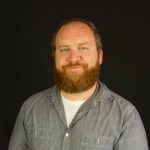
This year I had the good fortune to be accepted for AMIA + DLF’s 2015’s cross-pollinator travel grant (for which I applied at the prompting of the Bay Area Video Coalition preservation department) to attend the Association of Moving Image Archivists conference in Portland, OR. Even in the short time I was there, I was able to reconnect with some old friends from as far back as my college days.
Alongside me at the Hack Day were my Bay Area Video Coalition (BAVC) colleagues and video preservationists Ben Turkus and Kelly Haydon, and I helped make contributions to a resource for those needing help with FFMPEG‘s dizzying array of arguments called the Ffmprovisr. (Learn more about the Fmfprovisr on the AMIA Github account.) I feel that site’s dissection of the ffmpeg command line will come in handy for those trying to become more versed in that powerful tool. I hadn’t been quite sure what to expect from the Hack Day event, but found it to be a relaxed and friendly group of people.
More than anything, I was struck by just how important open source efforts are in [pullquote1 align=”right”]More than anything, I was struck by just how important open source efforts are [in media preservation]. [/pullquote1]
areas such as this. Analog media preservation is not an area of commercial viability, and analog video preservation even less so, focused as it is on technology that was relatively short-lived and now more or less entirely abandoned. The work of volunteers and funded projects is critical.
On top of that, it was great to see the Hack Day bringing people of disparate background together to solve problems. There’s nothing like witnessing a Forth programmer in attendance happen to encounter a preservation with outdated Forth code– about as likely as watching a unicorn eat a four-leaf clover– and the kind of thing that makes events like this really special.
